No one was in any hurry to get up and out after yesterday’s long summit day. We had breakfast, packed our high-altitude gear for the last time, and began the 4-mile descent to Plaza de Mulas Base Camp.
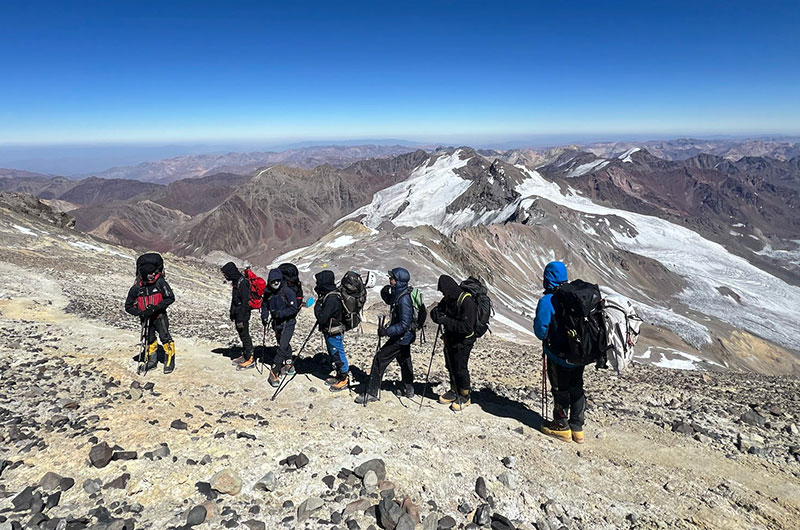
As we headed down the Normal Route, I spotted the Berlin Refuge off to my left — Camp 3 on that side. I don’t think anyone took a photo since it didn’t look much different from our own Camp 3, at Cólera.
We continued along, taking a short break every half mile — this time one only taking us 40 minutes.
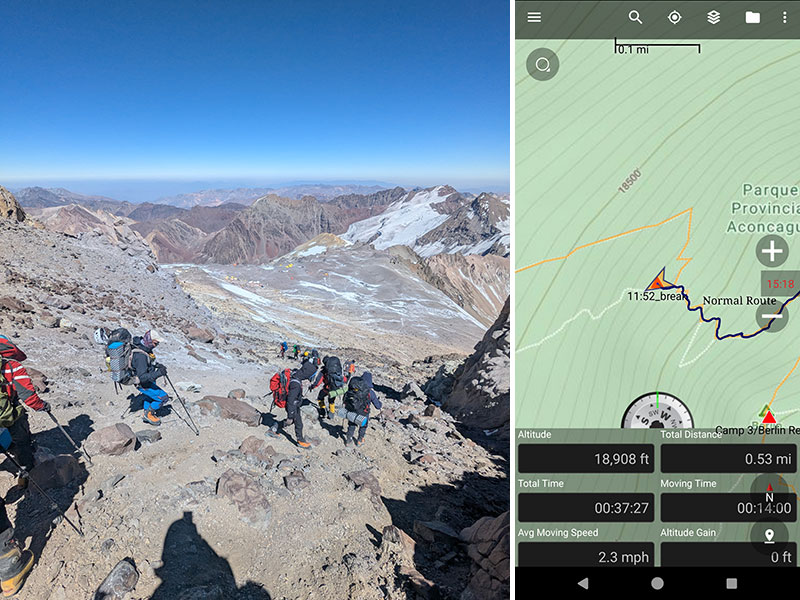
Camp 2 — Nido de Condores
After trekking one mile in one hour from Camp 3 Cólera, we walked in to Camp 2 at 18,400 feet.
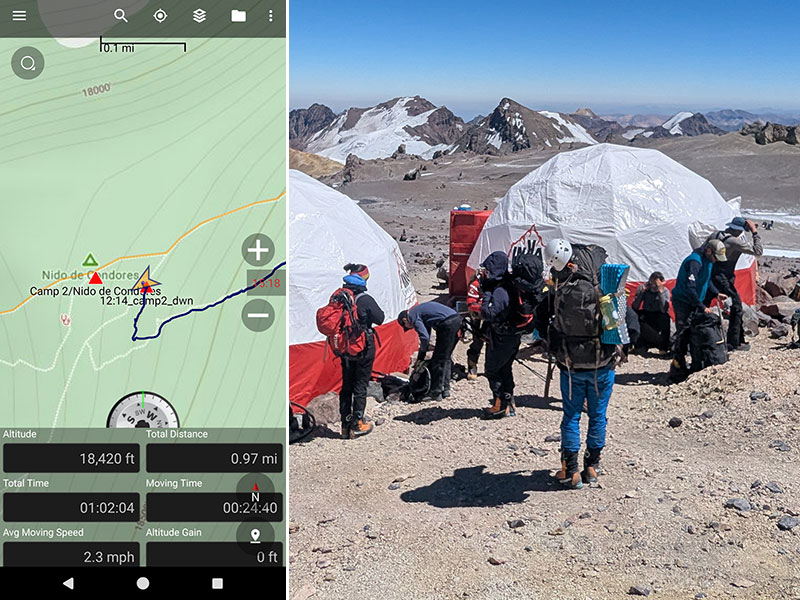
Camp 2 on the Normal Route is also known as Nido de Condores — “Condor’s Nest” in English.
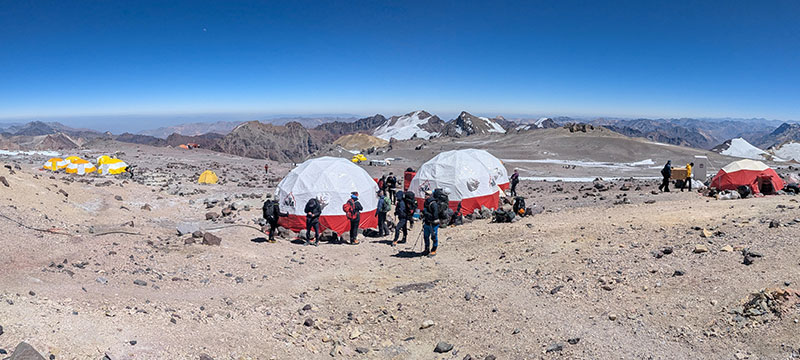
The footprint of this camp was enormous — and flat! I wondered what it might look like during the height of peak season. By now, everyone was breaking down camp and wrapping things up for winter. We were among the last groups of the season, the last to be doing a 360° Traverse with Inka for sure.

The last of the penitentes were melting out on the Normal Route as well.
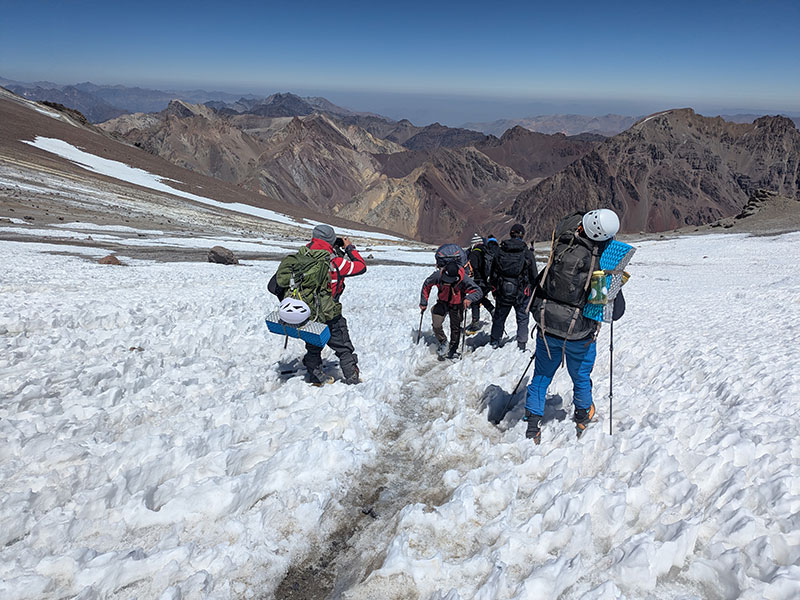
More porters earning another day’s wage — these guys have some incredible stamina.
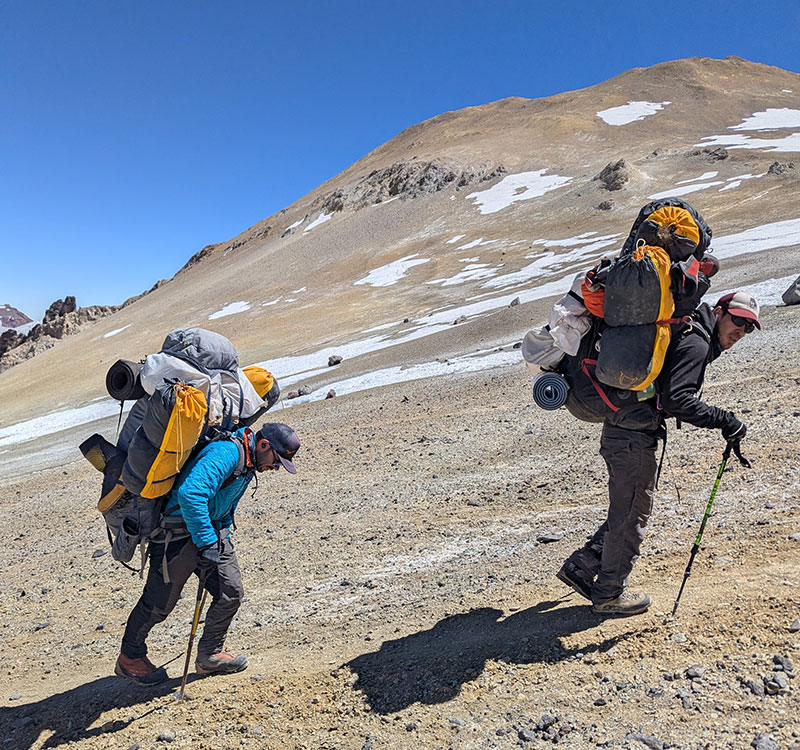
Our next rest stop was at Alaska Rocks. It was 1pm with 1.7 miles tallied so far. This spot sits about halfway between Plaza de Mulas and Camp 3 Cólera. I grabbed a screenshot during this break but didn’t capture any such stats when we reached Camp 1 just 30 minutes later. Blame it on fatigue.
Here is a look back at Alaska Rocks from Camp 1.
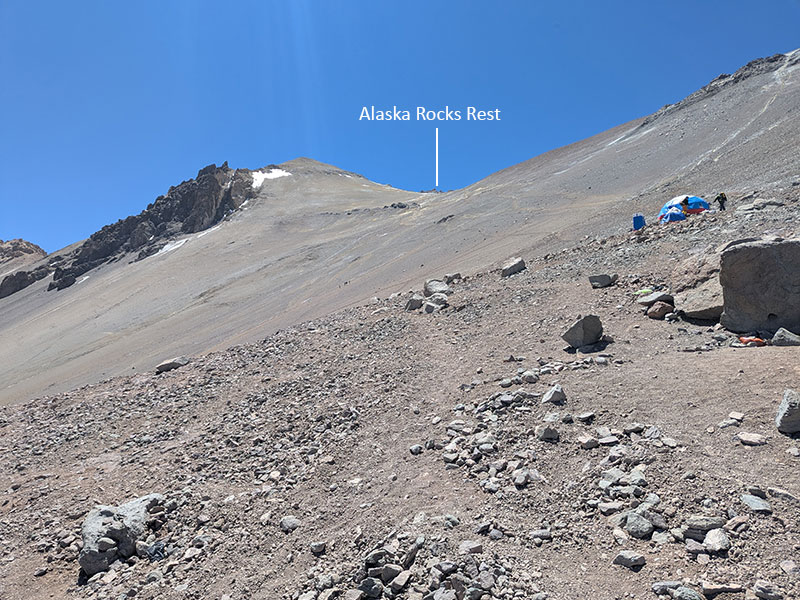
Camp 1 — Plaza Canada
Reviewing my GPS tracks, Plaza Canada — Camp 1 on the Normal Route — sits about 2.25 miles below Camp 3 Cólera, a stretch that took us roughly 2 hours to descend.
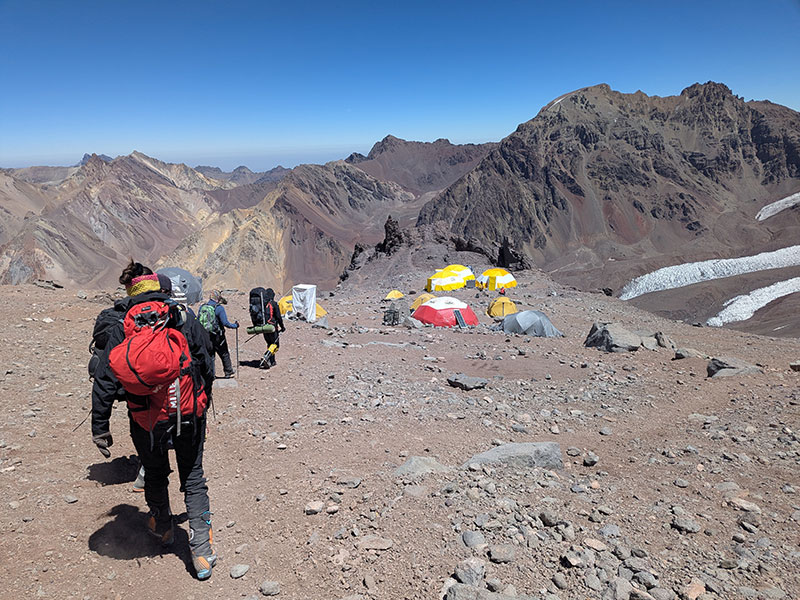
This camp is perched on a nice ledge with amazing views of the Horcones Glacier across the valley.

We took one final break at 2p, between Camp 1 and Plaza de Mulas. We covered 3 miles so far with less than a mile to go. Not long after, today’s destination came into view.
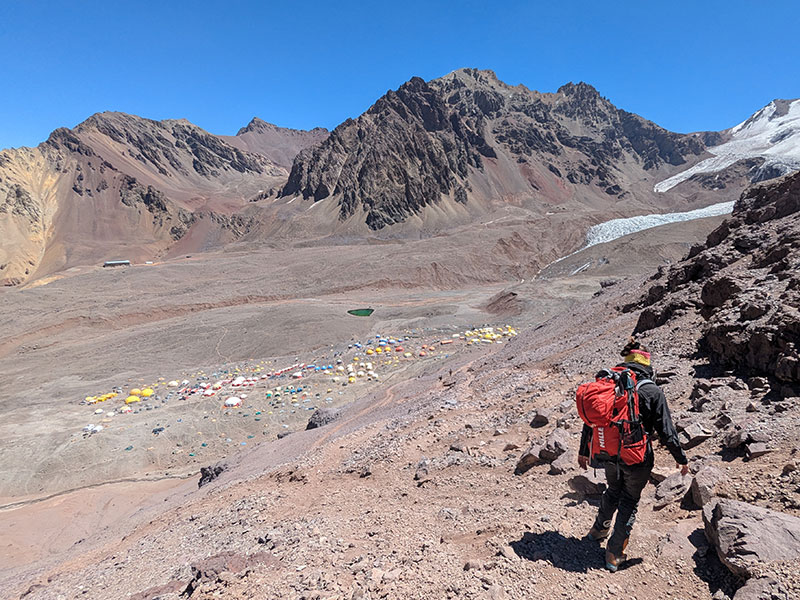
Plaza de Mulas Base Camp
Plaza de Mulas is more than a base camp — it’s a small high-altitude village. You’ll find dining tents, bunkhouse-style sleeping tents, and private accommodations if you’re willing to pay extra. There’s an internet café, small concession tents, a medical station staffed by park rangers, and even the world’s highest art gallery — all at 14,000 feet.
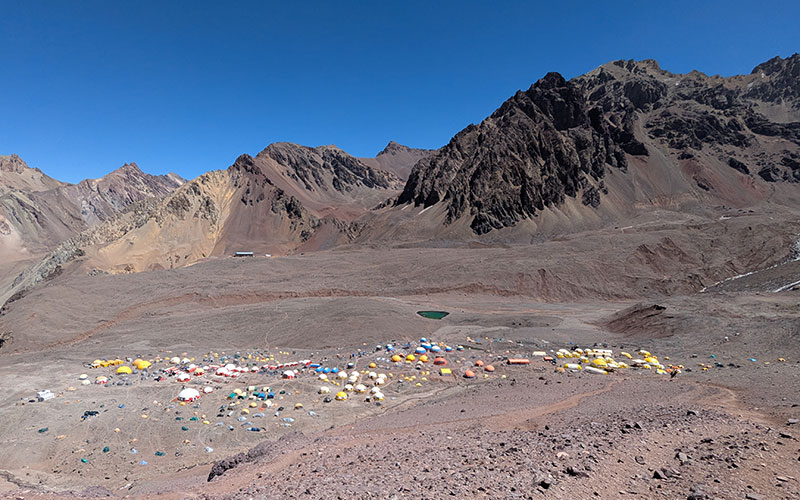
Finally walking into Base felt so good. The day wasn’t especially hard, but certainly felt like a long one.
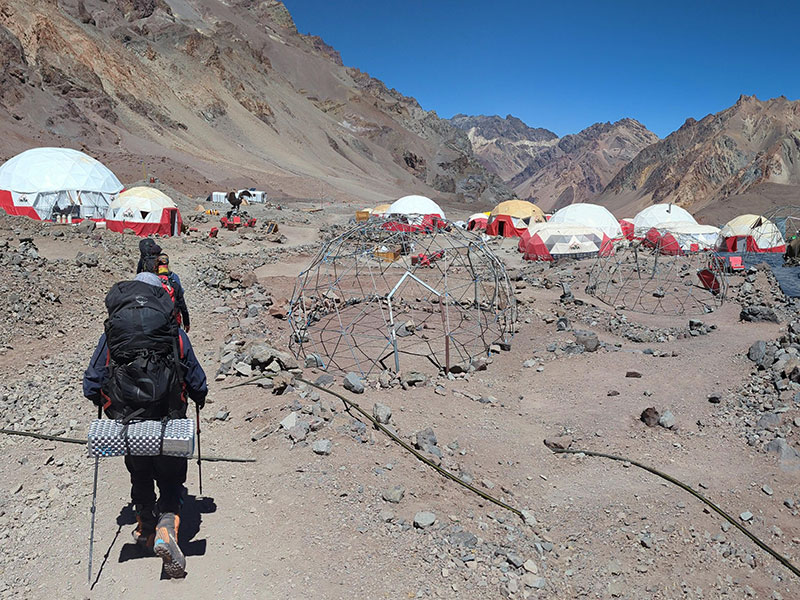
We arrived at 2:45p, three hours after leaving Camp 3 Cólera, 4 miles up the mountain.
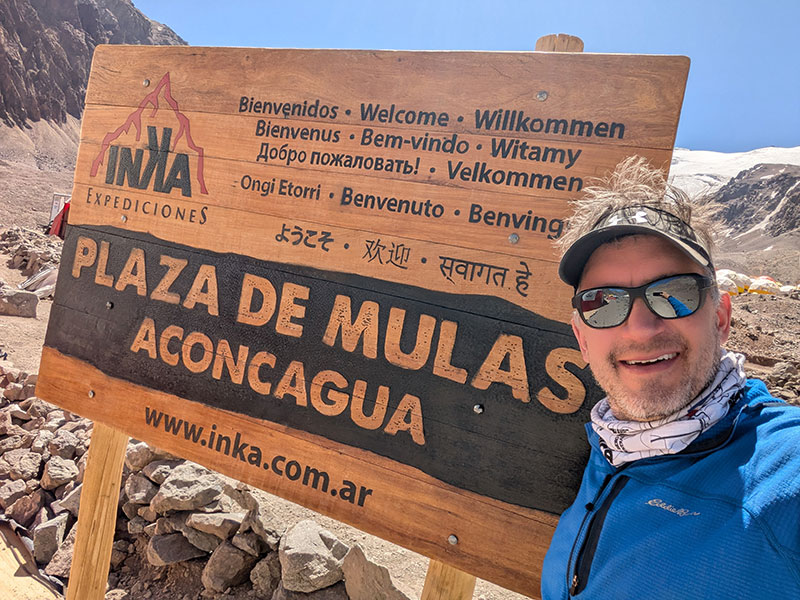
Noticing the altitude on my phone, we were at the exact elevation of Mount Rainier!
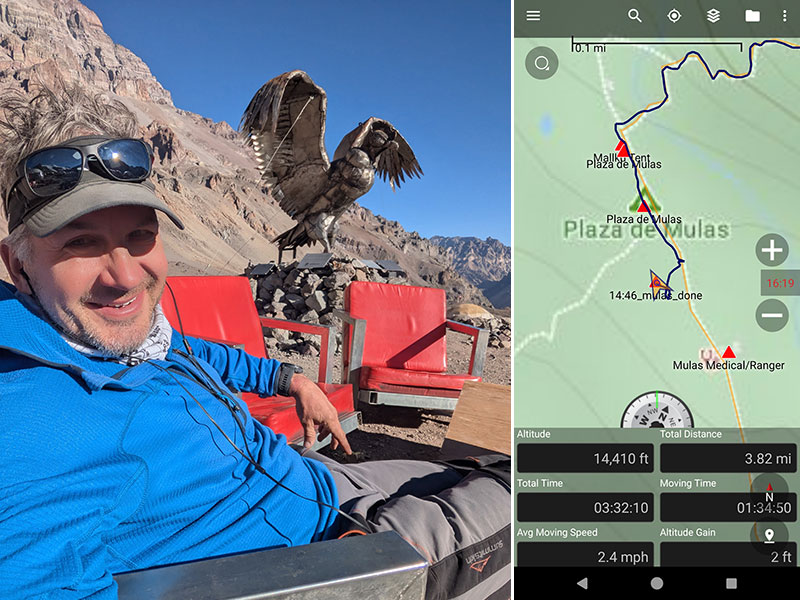
Standing watch over Plaza de Mulas, this iron statue of a condor has become the camp’s unofficial mascot — a symbol deeply rooted in Argentina’s mountain culture.
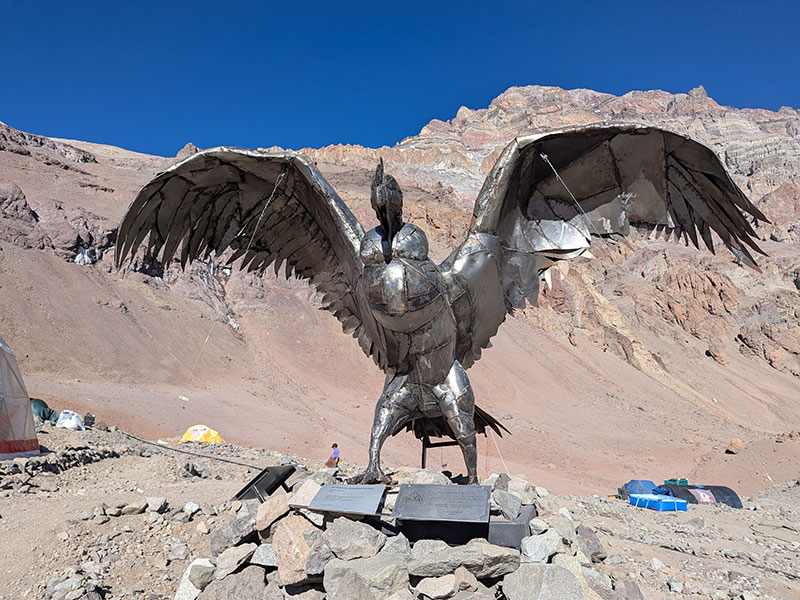
We were welcomed with an all-you-can-eat buffet and the offer of a hot shower. YES, please!
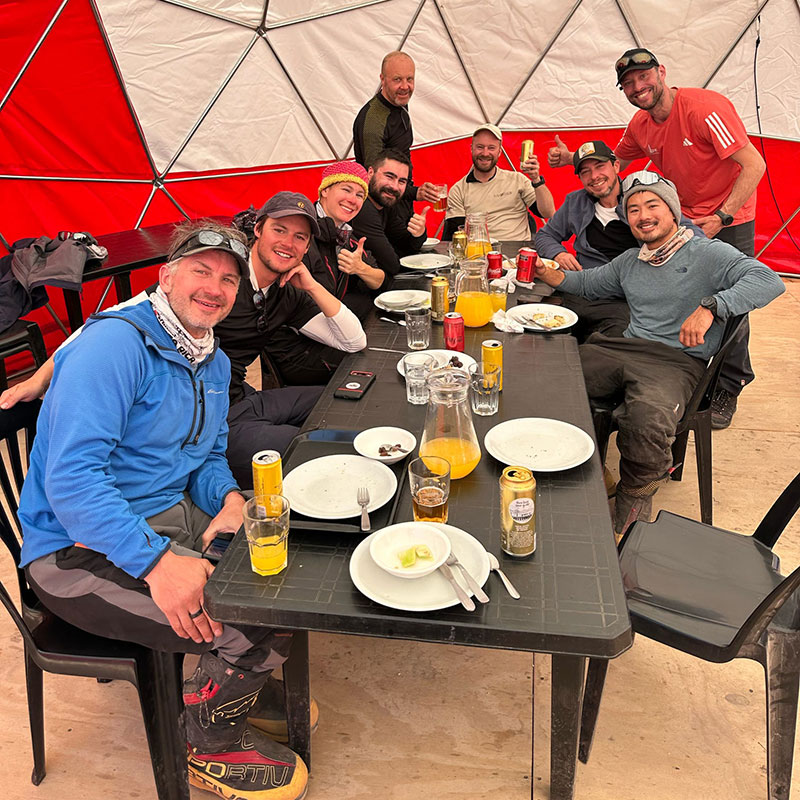
While showers took place and bags were unpacked, a big celebratory dinner was already in the works.
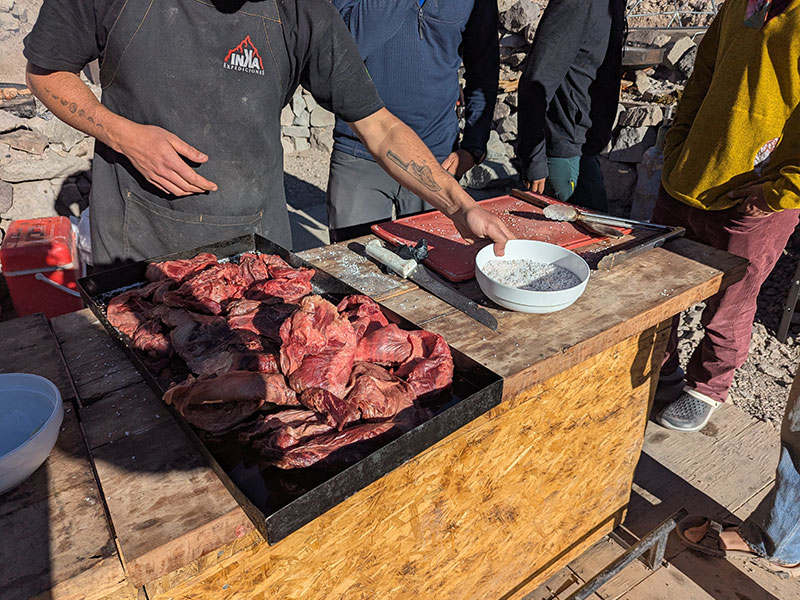
Yet another skill these Argentinians are very good at!
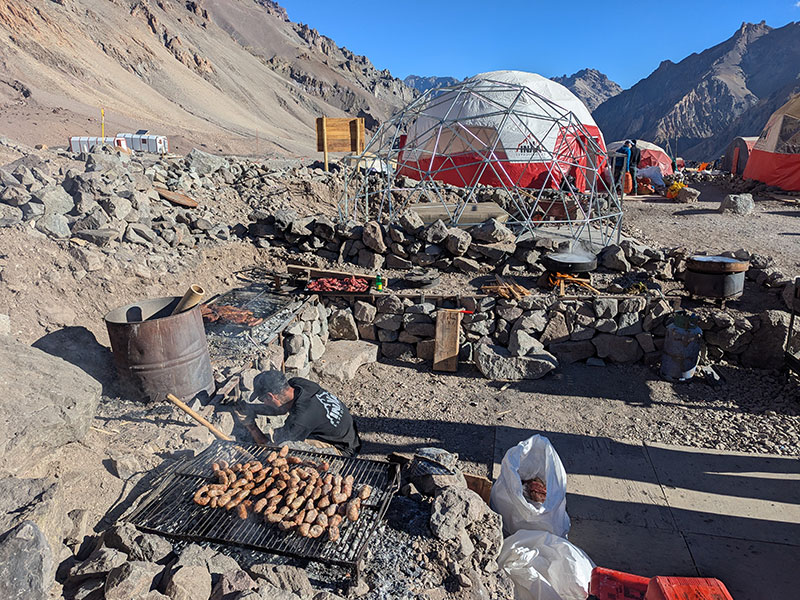
The festivities rolled on late into the night, with glasses raised and spirits high. Part of me wished for one last day of rest to soak up this amazing mountain. We were, after all, three days ahead of schedule — two saved from not needing the bad-weather buffer, and another shaved off by moving straight from Camp 1 to Camp 2 on Day 10. But what would we really have done? Shared that bunkhouse again with seven others while trying to stay warm at 14,000 feet one more time? No — it was time to go.
